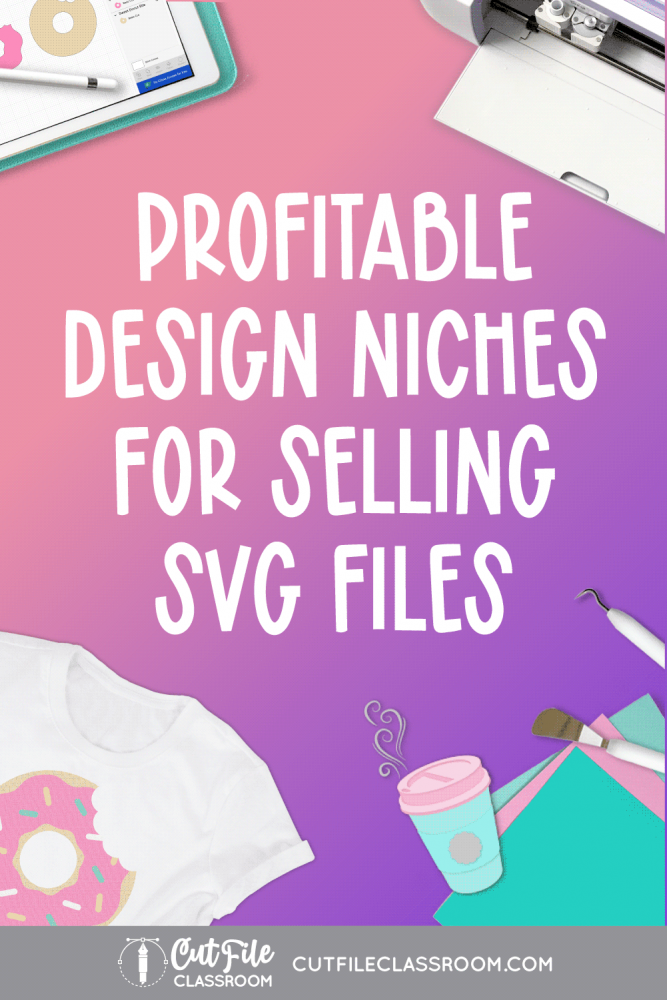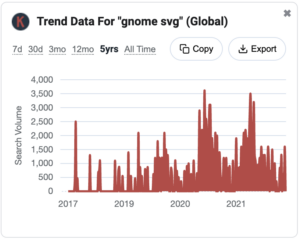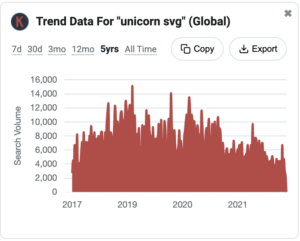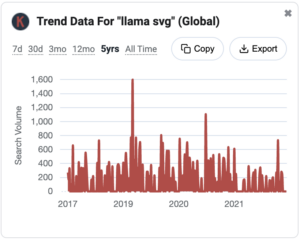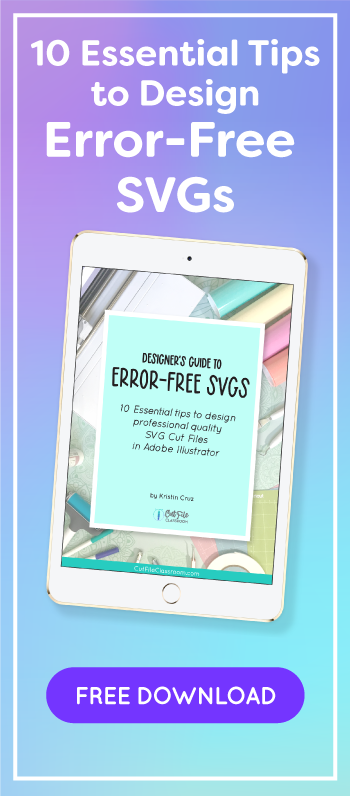Within the world of digital cut files, there are sooo many types of projects, materials, and audiences that we can design for! Over the past several years, these options have only continued to expand, opening up even more profitable design niches for selling SVG files!
What is a niche? A niche is a specialized portion of a larger market that targets a specific audience. So…within the larger market of SVG cut files, a niche could be cut files that are designed specifically for:
- a certain type of craft or material (HTV T-shirts, cardmaking),
- an in-demand style or theme (vintage, farmhouse, kawaii, hand-lettered),
- or even a specific type of machine, tool or feature (laser cut files, drawing pens).
Choosing a well-defined niche and audience to serve in your SVG business will give you a better chance of dominating in that area. Focusing on a niche also builds credibility and makes your shop look organized and trustworthy compared to a shop that has a spattering of everything. Customers looking for designs in your niche are more likely to choose your shop over more generalized ones and become repeat, loyal customers.
You might worry that narrowing down your target market might be limiting, but when you try to appeal to everyone, you end up appealing to no one.
Below are some ideas for profitable SVG design niches along with examples of SVG designers that have well-defined niches. This is by no means an exhaustive list, but meant to spark your interests and show how versatile SVGs can be!
SVG Design Niches:
Adhesive Vinyl
- Tumblers, mugs, wine glasses, drinkware
- Christmas ornaments
- Porch signs
- Glass blocks
- Cutting boards
- Welcome mats
- Wood signs, canvas signs, round door signs
- Shadowboxes
- Stencils
- Decals (wall decals, car decals)
- Glass etching
- Wine bottles, drinking glasses, baking dishes
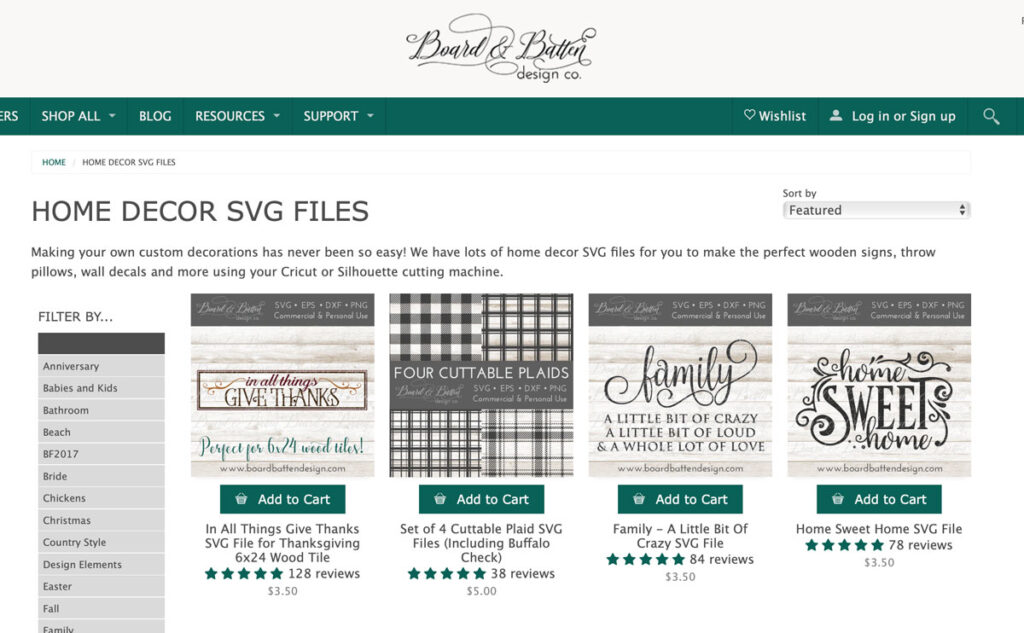
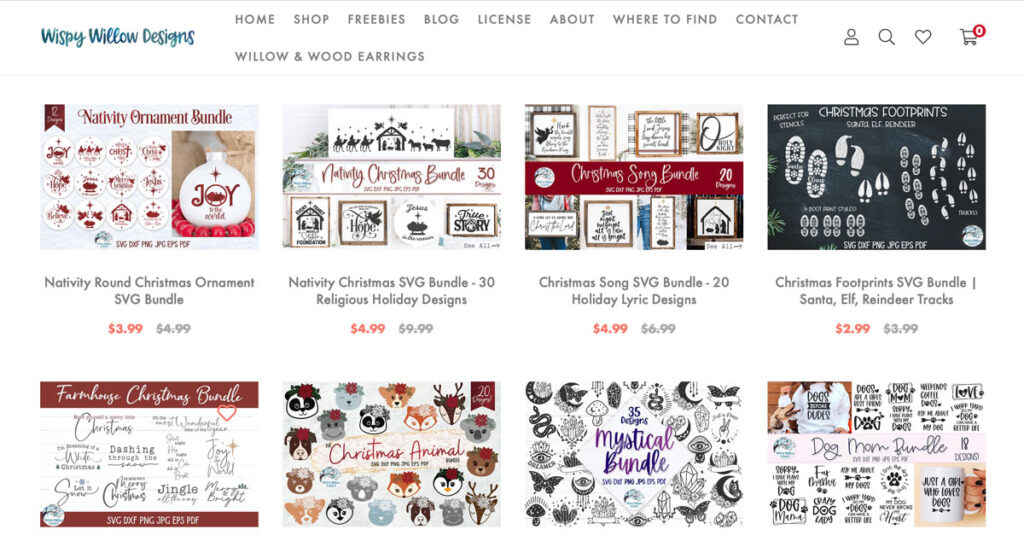
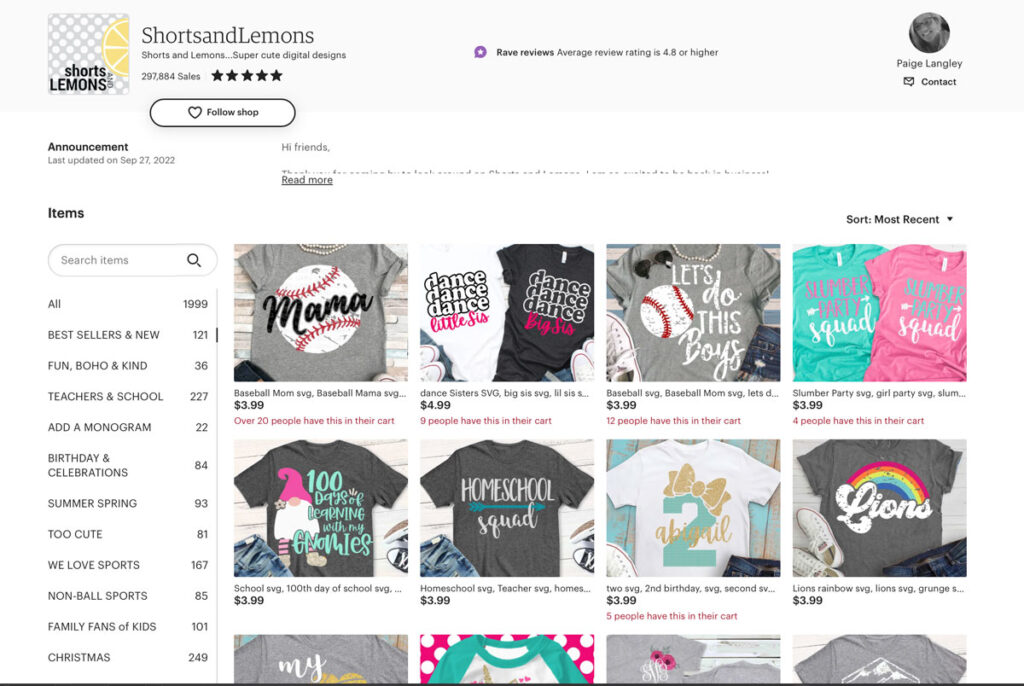
Heat Transfer Vinyl (HTV)
- T-shirts, bodysuits, hats, shoes, apparel
- Tote bags, cosmetic bags, backpacks
- Pot holders, aprons, kitchen towels, garden flags
- Pillows, milestone blankets, plushies
Papercraft (Cardstock)
- Scrapbooking
- Cardmaking
- Journaling
- Party decor – banners, cake toppers, favor boxes
- Shadowboxes / wall art
- 3D layered designs
- GIft card holders, bookmarks
- Stickers / planner stickers
- Wedding invitations and stationery
- 3D designs: boxes, pop up cards, paper houses, paper sculptures, 3D flowers, treat holders
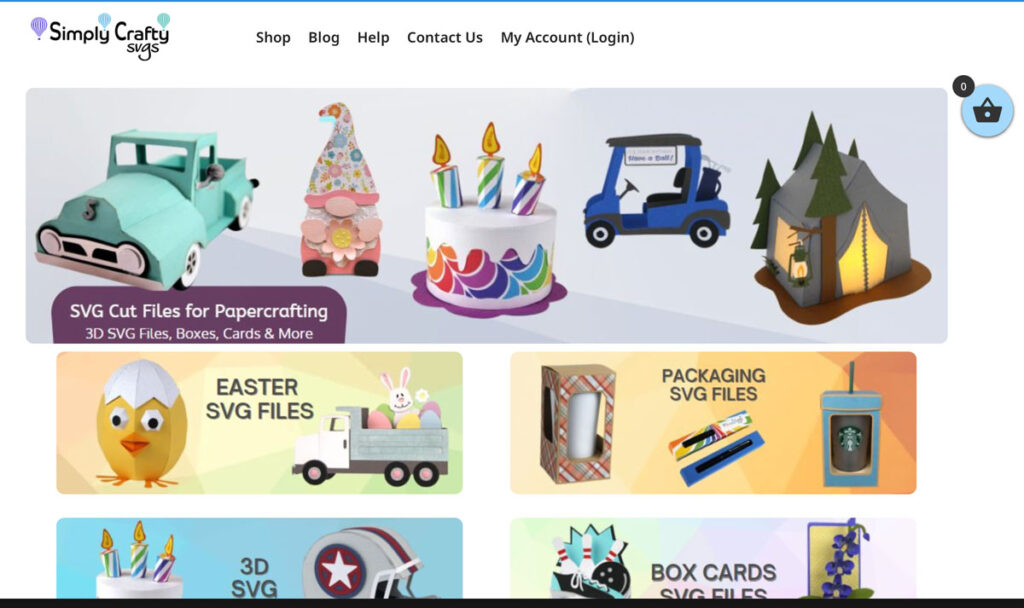

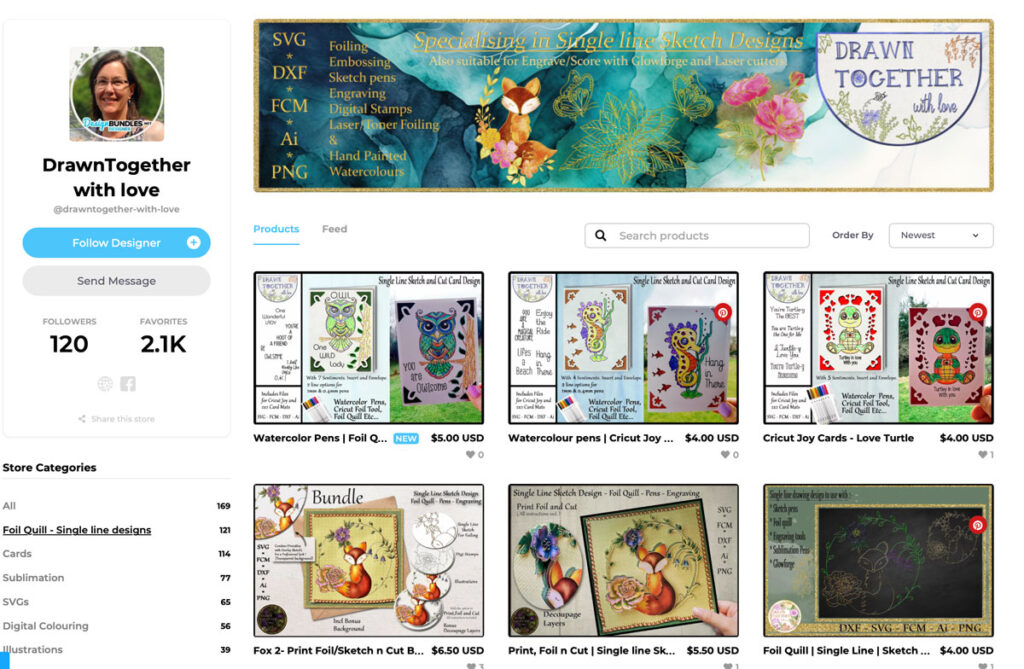
Single Line SVG Designs
Used with the below cutting machine tools on paper, fabric, acrylic, leather and other materials:
- Foil Quill
- Drawing pens
- Etching tools
- Engraving tips
- Invisible ink pens
- Leather tooling
Laser Cut Designs (Glowforge etc.)
- Ornaments
- Door signs
- Cutting boards
- Wall decor
- Home decor
- Earrings
- Keychains
- Puzzles
- Coasters
- 3D models (houses, cars, etc)
- Product display stands
- Storage boxes / bins / caddies
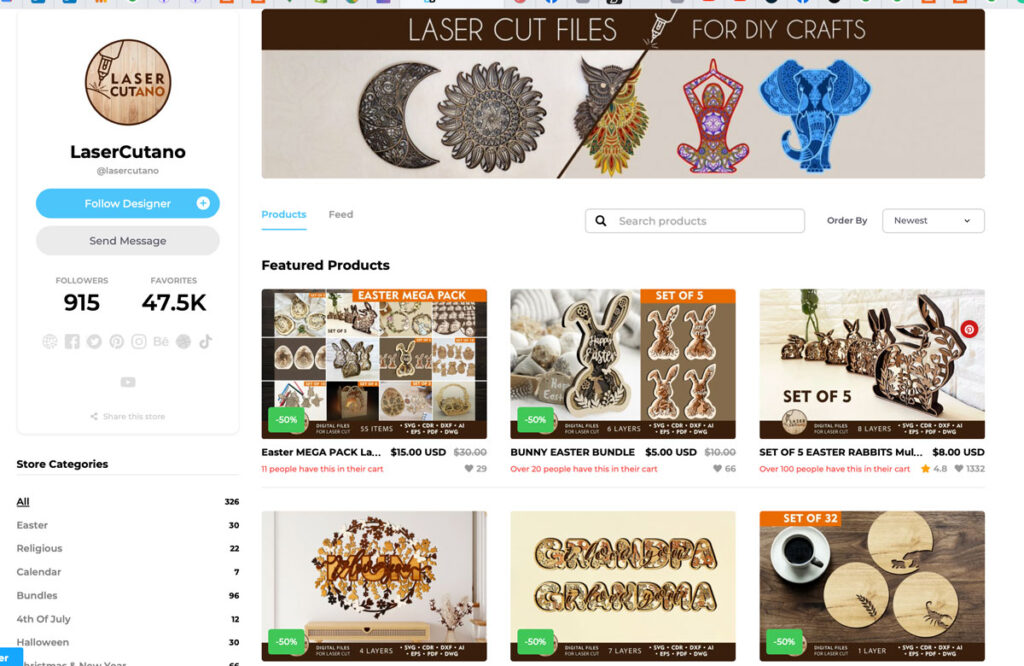

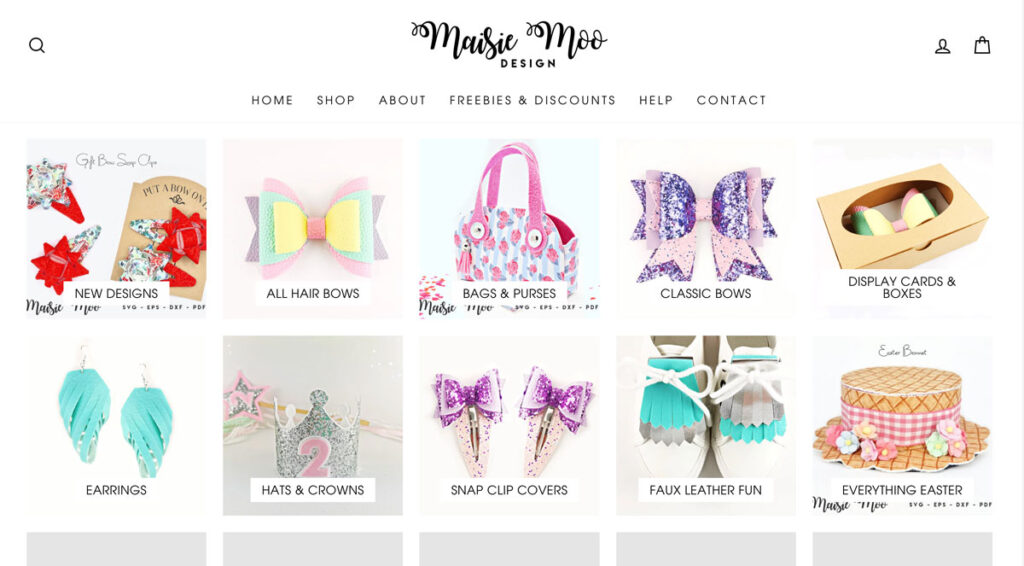
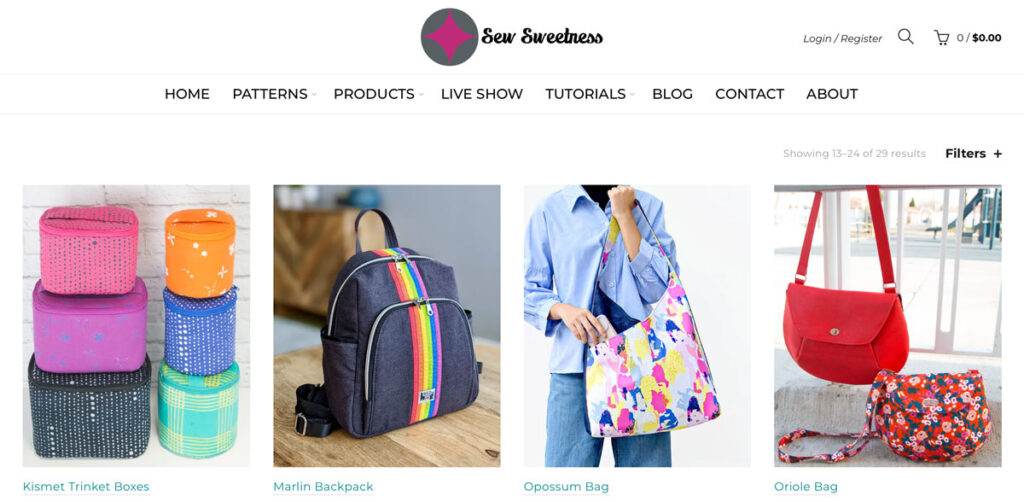
Sewing
- Embroidery designs, felties
- Rhinestone designs
- Jewelry
- Leather Earrings
- Bracelets
- Keychains
- Sewing Patterns
- Doll clothes
- Dog clothes
- Baby clothes
- Plush toys
- Purses, wallets
- Quilting Patterns
SVG Design Trends
Don’t get niches confused with trends. A niche is an established area of the market that will remain active for the foreseeable future.
A trend is something that quickly becomes popular but might not stick around long-term.
Currently there’s a big Retro trend happening in SVG design. Gnomes became popular a couple years ago and are still going strong. But before that, there was a big unicorn craze, which came in strong and then tapered down. Sloths and llamas were some other SVG trends that have seen their peak come and go for the most part.
By all means, you can and should design for the different trends that emerge, but be sure to design them within the scope of your niche.
Finding Your SVG Design Niche
Don’t get overwhelmed thinking you have to design “all the things”. Start with your crafty passion – find what lights you up, or something you excel at, and design for that niche. You could also try to see where there may be a gap in the market; an audience that is underserved, or an area that is just starting to gain momentum. But it should still be something that you enjoy and feel connected to, otherwise you’ll have a hard time sticking with it long-term.
If your chosen SVG niche is pretty broad, you can narrow down even further by theme, style or audience. For example, if you mainly create SVGs for vinyl crafting, then you might want to specialize in vintage style home signs, or cute children’s t-shirt designs, or small business owners who sell tumblers and other drinkware.
If you try designing a hodgepodge of everything, you’ll never be able to gain traction with a specific audience. Find “your people” and focus on them! That will make everything much easier – from designing, to writing product descriptions, to marketing etc. You can always expand your offerings later on, once your shop is more established.
I started my SVG shop with paper piecing designs for scrapbooking and cardmaking. (Paper piecing is when different colored paper shapes are cut, then assembled to create an image. It’s used in scrapbooks, cardmaking, and now popular in cake toppers and party decorations.) All of my designs were made to be cut and layered with paper and often included coordinating elements that could be used together.
Having a clear audience in mind not only made it easier for me to design quality cut files for their needs, but I was also able to write product descriptions and website SEO to attract my specific customer. I received my first sale within 1 week of soft launching my website – before I had even begun promoting it!
Get to Know Your Audience and Their Craft!
Once you’ve chosen the area and audience you want to target, the next step is to research.
Use Google and keyword searches to research what types of files people are looking for in your chosen area, and see what designs are already out there. Try to identify ways you can add your own style, or fill a growing need.
Facebook groups are a great place to get to know your customer. There are even separate groups for different types of crafting, including sign making, paper crafting, cardmaking, laser cutting, Foil Quill, etc.
Develop a solid understanding of how your audience is using that type of design, craft or material. What are they making? Who are they making it for? What is the creation / assembly process?
Design your SVG files specifically for your audience and their needs. Keep in mind that SVG files need to be designed differently depending on the material they will be cut from, so it’s very important to understand how to design SVG files for each type of material and craft you’ll be targeting.
Growing with Your Niche
If the thought of designing for one niche makes you feel limited, keep in mind that you can, and should evolve with your customer over time. Most crafters aren’t one-dimensional – often they may start in one area of crafting and branch out to different types of projects and materials as they learn and grow.
Let’s say you began selling SVG designs specifically for babies. Your designs might include bodysuits, milestone blankets, birth stat signs, etc. As your business grows, you might decide to add Mommy & me designs, or expand into toddler and big kid designs (quite literally “growing” with your niche!).
Over the years, I began seeing customers using my designs to make vinyl projects, so I started including vinyl-ready versions for my designs. As time went on, I also added other types of papercraft files that would appeal to my customer; like favor boxes, gift card holders, and Single Line SVG files (used with drawing pens, and foiling tools on cards and other paper projects). As I expand my offerings, I make sure that my designs stay aligned with my main target audience.
Final Thoughts
When starting an SVG business, focusing on a specific niche that lights you up and fills a need. Serving a niche will allow your business to grow more quickly and gain a stronger foothold in that corner of industry, as you advance your skill and expertise in that area. It will be easier to build a dedicated audience of customers when you are known as the “go-to” for a particular type of design.
As your business grows, you can always evolve with your customer, and add new types of designs that appeal to a larger audience, without losing sight of the niche that put you in business.
Pin the image below to save for later, and help fellow SVG designers!
